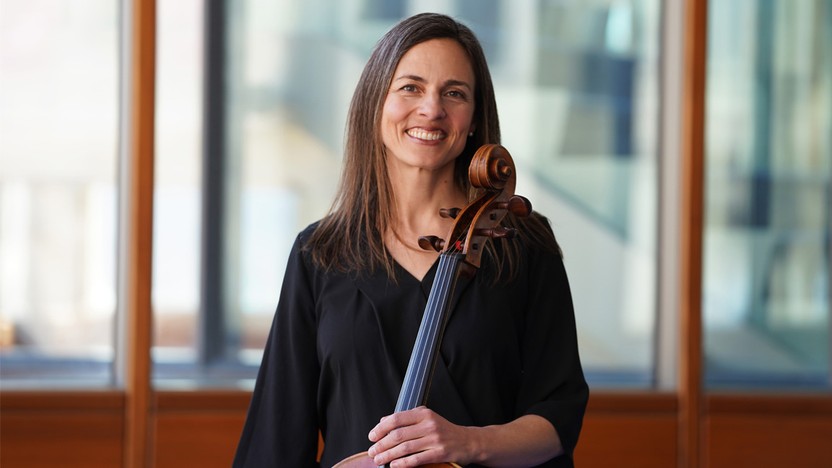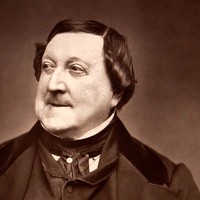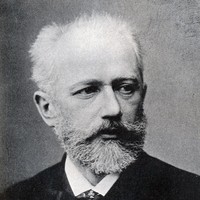Julie Albers Plays Tchaikovsky’s Rococo Variations



The 21-year-old Gioachino Rossini already had ten operas under his belt when he composed L’Italiana in Algeri (The Italian Girl in Algiers), and it took him only 18 days to craft the recycled libretto into a two-act dramma giocoso. It was this comic opera, along with the more serious work Tancredi, composed a few months earlier, that elevated Rossini from a successful working musician in Venice to an international opera star.
The premise of L’Italiana in Algeri is that the sultan Mustafà, bored with the submissive wives in his harem, decides he must find a strong-willed Italian girl. He lucks out when a shipwreck delivers the beautiful Isabella to his shore, but in the end she proves to be more than he can handle. In the overture (or sinfonia in Italian parlance), the music follows the same sonata-allegro structure that Joseph Haydn perfected in his symphonies, including the optional slow introduction that was a Haydn staple. And clearly the young Rossini learned plenty about musical humor from jolly “Papa” Haydn, as heard in the shocking outburst that interrupts the introduction’s idyllic plucking. There is barely a trace of the opera’s North African setting in the overture (maybe just a whiff of exoticism in the woodwind solos and the spirited percussion), but audiences at this type of comic opera weren’t expecting verisimilitude; they were there to get swept up in Rossini’s wild crescendos, unforgettable tunes and infectious joy.
Aaron Grad ©2025

Tchaikovsky composed the Variations on a Rococo Theme in December of 1876, amid the turmoil of a failed opera production in Saint Petersburg and a particularly nasty review in Vienna from the feared critic Eduard Hanslick. Prone to insecurity even at the best of times, Tchaikovsky asked for advice from the new work’s intended cello soloist, Wilhelm Fitzenhagen. Just 28 years old, Fitzenhagen was a professor at the Moscow Conservatory and principal cellist for the Imperial Russian Music Society. He also fancied himself a composer, and his “corrections” to the work of his well-established colleague show surprising aplomb.
Fitzenhagen rearranged the order of the variations, removing one entirely, and he rewrote most of the solo part. Tchaikovsky accepted the changes, and the hybridized version entered the popular canon, thanks to Fitzenhagen’s numerous concert appearances and an 1889 publication. Modern scholarship (aided by X-rays) revealed Tchaikovsky’s original music under Fitzenhagen’s emendations, and a reconstructed version debuted in Moscow in 1941. By then Fitzenhagen’s edition had cemented its reputation among cellists and audiences, and it continues to be the customary choice for performances.
Tchaikovsky’s title is a bit misleading, since his “Rococo theme” is his own original invention, and it is more aligned with Mozart and the Classical era than actual Rococo style. (Arising in France in the early eighteenth century, Rococo emphasized opulence and glamour, from gilded palaces to the trill-happy music of Couperin.) Following a stately orchestral introduction, the cello introduces the light-stepping “Rococo” theme, balanced in two repeated sections. The theme ends with a passage of adventurous harmonies, first in the winds alone and then shifting to the strings. That material returns various times to link the connected variations, and it brings Tchaikovsky’s rich Romantic voice into dialogue with the lean Classical ideals explored elsewhere in the work.
The first two variations maintain the theme’s flavor and pulse, adding increasing decoration and commentary, until the third variation breaks away to a gentle, singing melody. The fourth and fifth variations return to an outgoing, virtuosic character, culminating in an extended cadenza. The sixth variation, a minor-key Andante, bookends the earlier slow section, and trails off in an ascent of ethereal harmonics. Following the work’s only pause, the final variation enters with a rustic, throbbing intensity that builds through quick call-and-response phrases and breathless figurations, linking directly to the energetic coda.
Aaron Grad ©2015

(Duration: 27 min)
After Franz Joseph Haydn’s longtime patron Prince Nikolaus Esterházy died in 1790 and his successor disbanded the court orchestra, Haydn was left with a reduced salary and more freedom than he had enjoyed in decades. Seizing the opportunity, a German impresario active in London enticed Haydn to England with a generous contract for the 1791.92 season. Haydn’s London residency was a tremendous success, and he arranged a return engagement as soon as he could.
Haydn prepared the Symphony No. 99 during the interval between his London visits, when he attended to some Esterházy business in Vienna and also taught a few lessons to a young Ludwig van Beethoven. Just days after Haydn’s return to England, a concert featuring the premiere of the Symphony No. 99 confirmed his sterling reputation, as demonstrated by a review published in The Morning Chronicle: “The incomparable Haydn produced an overture [symphony] of which it is impossible to speak in common terms. It is one of the grandest efforts of art that we ever witnessed. It abounds with ideas, as new in music as they are grand and impressive; it rouses and affects every emotion of the soul.”
Symphony No. 99 features all the hallmarks that made Haydn’s London symphonies the gold standard for composers in his wake, most especially Ludwig van Beethoven. In the first movement, a slow introduction sets the stage, and the inclusion of clarinets adds a robust tone to a woodwind section that is granted more independence than in earlier symphonies. The Adagio is light and graceful, while the Minuet (an addition to the symphonic form that Haydn helped standardize) has a bit of a rustic character borrowed from the Ländler folk dance of Austria. The lively finale demonstrates Haydn’s verve and wit, starting with one of his favorite tricks: The orchestra restrains itself to a quiet dynamic for a long opening stretch, until the first loud arrival lands with maximal impact.
Aaron Grad ©2023
Get driving directions and find nearby parking.
Find dining options close to the venue.
View seating charts to find out where you'll be seating.
Get driving directions and find nearby parking.
Find dining options close to the venue.
View seating charts to find out where you'll be seating.
